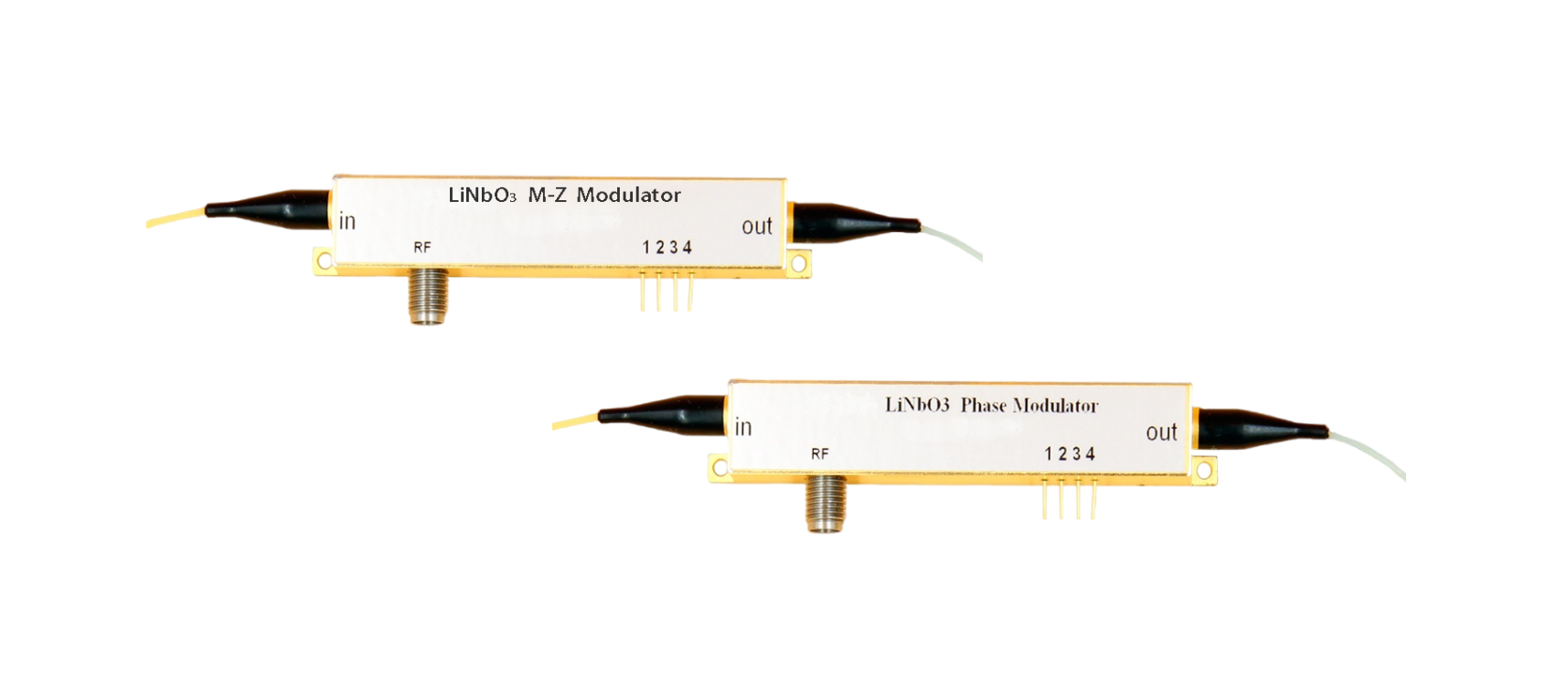Flexible bipolar phase modulator
In the arena of high-speed optical communication and quantum technology, traditional modulators are facing severe performance bottlenecks! Insufficient signal purity, inflexible phase control, and excessively high system power consumption – these challenges are hindering technological development.
Bipolar electro-optical phase modulator can achieve two-stage continuous modulation of the phase of optical signals. They feature high integration, low insertion loss, high modulation bandwidth, low half-wave voltage, and high damage optical power. They are mainly used for optical chirp control in high-speed optical communication systems and entangled state generation in quantum key distribution systems. The generation of sidebands in ROF systems and the reduction of stimulated Brillouin scattering (SBS) in analog optical fiber communication systems, among other fields.
The bipolar phase modulator achieves precise control of the phase of optical signals through two-stage continuous phase modulation, and particularly demonstrates unique value in high-speed optical communication and quantum key distribution.
1. High integration and high damage threshold: It adopts a monolithic integrated design, is compact in size, and supports high damage optical power. It can be directly compatible with high-power laser sources and is suitable for the efficient generation of millimeter-wave sidebands in ROF (Optical Wireless) systems.
2. Chirp suppression and SBS management: In high-speed coherent transmission, the linearity of phase modulation can effectively suppress the chirp of optical signals. In analog optical fiber communication, by optimizing the depth of phase modulation, the stimulated Brillouin scattering (SBS) effect can be significantly reduced, thereby extending the transmission distance.
In quantum key distribution (QKD), the entangled state of photon pairs serves as the “quantum key” for secure communication – the accuracy of its preparation directly determines the non-eavesdropping property of the key. The “flexibility” of the bipolar phase modulator is reflected in its ability to dynamically adjust phase parameters to adapt to environmental disturbances of different optical fiber links (such as temperature changes and phase drift caused by mechanical stress), ensuring high generation efficiency of entangled photon pairs. The “stability” is achieved through precise temperature control and phase-locking frequency technology, which supsuppress phase noise below the quantum noise limit and prevent decoherence of quantum states during transmission. This dual feature of “flexibility + stability” not only enhances the rate of short-distance entanglement distribution in metropolitan area networks (such as a bit error rate of less than 1% within 50 kilometers), but also supports the integrity of keys in long-distance transmission in intercity networks (such as over a hundred kilometers across cities), becoming the underlying core component for building an “absolutely secure” quantum communication network.

Post time: Jul-22-2025





